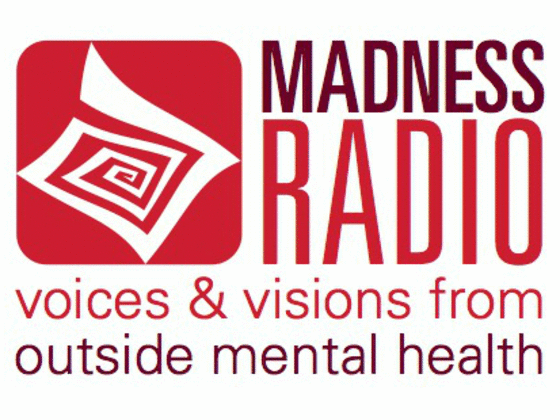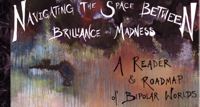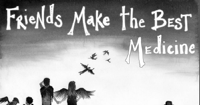COMMUNITY CRISIS TEAMS: ARE THEY REALLY IN OUR BEST INTERESTS?
Submitted by Graeme on Tue, 06/03/2008 - 10:45am
COMMUNITY CRISIS TEAMS: ARE THEY REALLY
IN OUR BEST INTERESTS?
Given the strained and occasionally deadly nature of the overall relationship between psychiatric survivors and law enforcement agencies, it really begs the question: should the police even become involved in situations where someone is experiencing an emotional or mental crisis?
It never ceases to amaze me how our community can be so acquiescent toward the continued (and escalating) state/psychiatric invasiveness in our lives when we are (to my mind) capable of much greater initiatives in our own behalf.
The much-touted community crisis teams, which pair a male psychiatric nurse with a plainclothes police officer on patrol in several Toronto neighborhoods, are no solution to my mind. On the contrary, these teams are dangerous for a number of reasons.
For one, they do essentially nothing to mitigate the risk of someone suffering serious bodily harm or even death at the hands of the police. The cop in the equation still has access to all the hardware of his own trade – a 9mm Glock, pepper spray, baton and quite possibly a Taser, as well as ETF backup – which the police culture of violence has trained him to resort to with possibly deadly outcome. Second, these teams enable far greater legal invasive capabilities by psychiatric personnel.
A psychiatric nurse, under ordinary circumstances, has no more right to cross another person’s threshold uninvited than does any other private citizen. By virtue of being in the company of a police officer, this health worker can now simply offer the opinion that a ‘medical emergency’ exists within the premises in question, after which the cop can utilize his own ‘discretion’ in dealing with the situation – by kicking the door in. Presto-changeo – the nurse now has a legal ‘in’ where none existed before.
On top of that, we need to factor in the insensitivity regarding gender, culture and sexual orientation so frequently demonstrated by both the police and ‘mental health’ professionals, which can further complicate situations.
What’s wrong with this picture? And what needs to be done instead?
For starters, rather than resorting to involvement by law enforcement (or psychiatry) when someone is in crisis, we need trained teams composed of members of our own communities who can intervene in a non-violent manner by de-escalating potentially threatening situations and offering mediation, referrals to community resources or merely a sympathetic ear. First contact can be made by telephone or in person in a safe neutral space without threatening the safety or sanctity of someone’s home.
Another helpful initiative would be the establishment of small, neighborhood-based, hassle-free crisis facilities that would operate on a walk-in basis and be staffed by trained members of the psychiatric survivor community. Such centres could offer a safe place where a distressed person could find someone to talk to, a few hours’ uninterrupted sleep, a hot meal or a portal for accessing other community resources.
Then there are other ideas such as survivor-run housing co-operatives, retreat centres and longer-term intentional communities – the possibilities are virtually endless. The only limits are within our own imaginations.
Given the alternatives we are capable of creating for ourselves, there is no sense in continuing to sanction potentially violent state/psychiatric intervention in the lives of frightened, angry, lonely, distraught human beings. An approach rooted in consent, respect, compassion and the potential for genuine healing must be the way of the future.



















Interesting read. I didn't
Interesting read. I didn't know about these new CCTs in Toronto and will have to look into the subject some more.
I def. agree with the idea that anyone in uniform responding to someone in crisis can be frightening and possibly only escalate the turmoil the distressed person is experiencing. However, as someone who works in supportive housing with "psych rehab" clients, I do understand why it can be necessary to have an officer available. People who are properly trained to deal with clients in distress, such as a psychiatric nurse, counseler, site staff ect., are not allowed into a clients room or (in most cases) to restrain a client if they are harming his/his self. Basically, at least for the co. I work for, if I client poses a danger to him/her self, other residents or staff there is nothing we can do except attempt to talk the person down. Good in theory, not so good in practice. The only reason why this isn't good is because it leaves staff no other option but to call law enforcement or non-emergent response teams to bring the client to the hospital where there are people "allowed" to stop the client from their destructive behaviors.
Not saying in anyway that I think harsh restraints, tazers, or forced meds should be used. There are other "restraints" that can be helpful and not harmful; holding a person briefly for 5-20 seconds, massaging of the hands and feet to return blood flow, helping a person get into a position similiar to that on the airplane safety manual, ect. We can't do this though. Main reason... law suits. Despite a client being in a resident or treatment program voluntarily, and that the aim of these would be to benefit the client while also saving tax payers money by not having them carted off, they could be considered human rights violations. Who ends up with those charges against them? Not just the MHO but the staff. Me! ...and countless other staff members who really are there to help not harm.
Survivor based crisis facilities/supportive housing is a wonderful idea. It's actually what I hope to base my career around. But what about in the meantime? How can we ensure both client and staff safety? Client human rights should never be violated, and to play devil's advocate once more, does this mean their treatment team forfeits their human rights? If you take law enforcement out of the picture there are really on two options as of right now, treatment teams allow clients to continue their self destructive behavior despite the risk he/she poses to themselves and others, or treatment teams are protected to take certain steps deemed necessary (that will not create more physical harm or emotional trauma to the client) in a crisis situation.
Other random thought of possible interest to you... a client of ours last week called the crisis response network our organization uses. The client said she felt suicidal and wanted to go to the hospital. The goal of the CRN is to keep clients safe and out of the hospitals. What did the woman on the phone do? She spoke with the client for less that 3 minutes then told her to go to the hospital. Sigh...